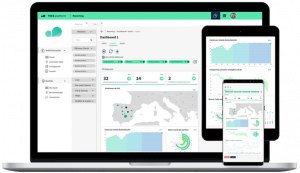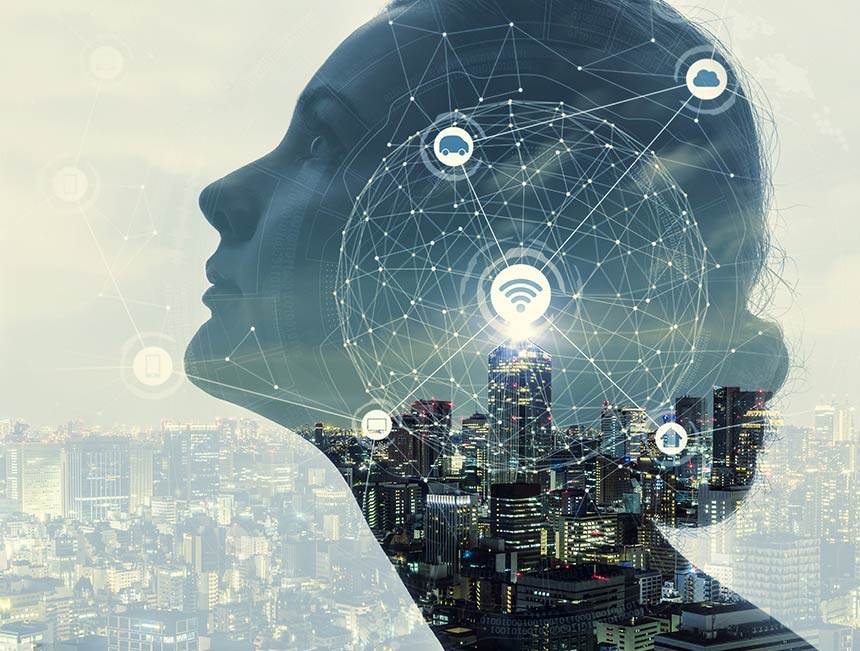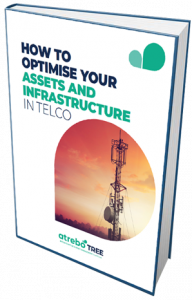Iot or Internet of Things technology has meant a real revolution in the integration of the physical world with the digital one. What’s more, IoT is present in many moments of your day-to-day life.
“The Internet of Things has the potential to change the world, just like the Internet did. Maybe even more so”
Kevin Ashton
Over the last decade, the technology industry has achieved significant advances, with important social, economic, and environment impacts worldwide. Even today, reality is still a step ahead of us.
In 2023, organisations will accelerate the implementation of IoT to streamline their operations, improving productivity, increasing the quality of their products/services and reducing costs.
While 5G was a breakthrough that revolutionised the telecommunications sector just 5 years ago, today we are talking about other level of disruptive technologies: 6G and the rapid development of AI, whose illicit use – due to its power and impact – is of great concern to some experts.
In this dynamic environment, in which every year there are more things happening than in a season of, there are certain advances will mark a breakthrough in the discoveries to come.
In addition, the evolution of Industry 4.0 and the drive to automation are further contributing to the use of IoT as a competitive advantage for most organisations in the telecom sector. In this regard, what we call “Emerging Technologies for 2023” will play a key role.
If you have heard about all of this and want to know the significance of this technological phenomenon, we believe this article can serve you as a useful guide to catch up.
- What is IoT and why is it so important?
- IoT vs Artificial Intelligence (AI)
- IoT Solutions And Future Applications In Telecommunications
- Discover TREE
What is IoT and why is it so important?
The IoT consists of a large set of devices or objects that are interconnected, allowing them to share data with each other. This is possible because, as the Internet of Things Agenda explains, these devices have unique identifiers (UIDs) and the ability to transfer data over the network without the need for human-computer interaction.
In essence, Internet of Things involves establishing a global Internet network to take control of electronic devices or associated systems that are connected to each other. This improved integration between the physical and virtual worlds pays off in the long term and usually results in improved efficiency, accuracy, and economic benefit.
This new technology, as its developer Kevin Ashton predicted, has the potential to change the world in the same way that the Internet once did. IoT is going to bring about a real revolution for both individuals and companies, as the automation of tasks will exponentially increase the productivity of companies.
If one thing is clear from what we have seen so far, it is that IoT is here to stay. Statista forecasts that by 2023 there will be 17 billion IoT connected devices worldwide and 29 billion by 2030.
IoT vs artificial Intelligence (AI)
The implementation of IoT to big organisations has allowed devices that had previously been considered as “ordinary” to be connected to Internet by simply adding special sensors to every object such as a refrigerator, a washing machine or even a shaver.
As far as we have explained, IoT is a very valuable resource on a personal scale, not to mention its potential if applied to a business scale: Connected Vehicles, Smart Energy Grids, Supply Chain Management, Smart Cities, Agricultural, Industrial, and more.
IoT and AI are two independent technologies that have significant impact across multiple verticals. At this point, you might be wondering what’s the difference between IoT and AI. Let’s get into that topic.
In a nutshell, while IoT is the digital nerve system, AI becomes an advanced brain that makes the decisions that control the overall system.
More specifically, the Internet of Things (IoT) describes the network of physical objects (“things”) that have embedded sensors, software and other technologies in order to connect and exchange data with other devices and systems over the Internet.
Artificial intelligence is the simulation of human intelligence processes by machines, making them smarter. Therefore, its purpose is to create machines that mimic human intelligence to perform tasks and that can improve as they gather information.
IoT solutions and future applications in telecommunications
Perhaps, in the face of this flood of information, you are asking yourself… What’s next? How is IoT applied to business nowadays, especially Towercos and MNOs?
The future of this technology is bright and encompasses every sector you can imagine. At the domestic level, virtual devices such as Alexa or Google Home will find more and more IoT-enabled devices to connect to and facilitate the automation of tasks in our day-to-day lives.
The prospects for implementing IoT technologies in the telecommunications industry are undoubtedly promising. So IoT is indeed a revolutionary path to future technology solutions which are already been developed:
- Robotics: the use of IoT to develop potential applications in robotics have meant the transition from fiction to reality. Robots can help increase efficiency in sectors such as manufacturing sites or monitoring traffic. IoT is key to monitoring and controlling robotics.
- Smart Cities: IoT devices such as connected sensors, lights, and meters are applied to smart cities to collect data, use it and automate systems such as energy use or traffic. Thus, improving the efficiency of urban services, reducing costs and improving society welfare.
- Home Automation: the application of IoT to home automation allows to turn a standard home into a smart one, and is already changing the way we live, from controlling lightning, security systems, climate and more, using internet connection.
- Pulse Oximeter: these are small devices to measure oxygen levels whenever a significant altitude is reached. This may be the case of trekking high-altitude mountains. So, it contributes to control health values and it can be very useful for the healthcare sector.
- Smart-Air: still in developing phase, it helps understanding indoor air quality though a laser dust sensor, a carbon dioxide (CO2) sensor, and a temperature-humidity sensor. The tracking and delivery of data is done with IoT technology. Moreover, this application can be connected to smart home devices.
- Automotive Applications: futuristic vehicles, especially driverless cars and fleet management are a popular topic which everyone talks about. So, when it comes to the automobile sector, IoT is crucial. By the integration of gadgets, sensors, cloud computing and other applications it increases safety and reduces risk, predicts maintenance and much more to discover.
- Health Care Applications: provides new opportunities for healthcare professionals to monitor patients, as well as for patients to monitor themselves, saving costs and time. Some of the innovations most talked about are Smart Glucose monitoring system, Smart Insulin Pens, Ingestible Sensors or Robotic Surgery.
Discover TREE
It is a fact that the adoption of IoT allows Towercos and MNOs to anticipate incidents on their assets an infrastructure. But… How can it be achieved?
Read our Use Case: IoT Massive Deployment and Assets Monitoring to learn all about how IoT works with this integrated solution in TREE Platform.
Atrebo partners with Everynet, one of the market leaders developing solutions using LoRaWAN networks to reach a successfully monitoring of massive IoT assets using our platform TREE.
Atrebo develops TREE, an asset management digital transformation platform specialised in process automation and infrastructure management.
At Atrebo, we help our clients improve the management of their critical infrastructures by transferring our know-how to them. With the help of our solution, your company will be able to increase productivity, digitise processes, reduce operating costs or identify new sources of revenue by adopting a digital strategy, thanks to the knowledge acquired in our 12 years of experience in the sector.


